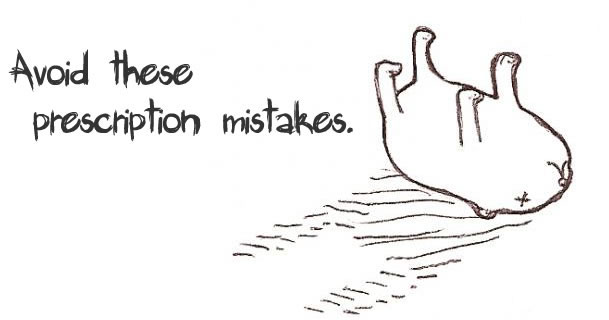Hi, [s2Get user_field=”first_name” /]. 🙂
Let’s jump right into, with prescription talk today.
To continue optimal progress, and avoid difficult plateaus, you need to monitor your focal plane prescription use carefully.
Habituation is always working against you, as you are working towards your vision improvement goal.
Do you remember how that first day felt, when you used your changed normalized prescription? Everything was slightly ‘off’, out of focus, and it took an effort to re-assess your surroundings. That was a peak day for change opportunity for you. Your eyes had to work to acquire focus, your brain had to make sense of the input, there was a lot happening.
The same was largely true for the second day. And the first week. And the second week. After six to eight weeks though, the curve of that impact is diminishing fairly quickly. To some extent your vision has actually improved to meet the changed focal plane requirement. And to some extent, you just became used to reduced focus.
To some degree this is ok. To some degree it is just plain unavoidable.
There are some things you can do though, to make sure that you get the most out of your focal plane prescription changes, and continue to progress. If you don’t, you can easily miss the window and get ‘stuck’ with the level of progress you attained previously. Don’t get stuck!
Here are the key habits to avoid plateaus:
I bring this up now, because we are just into the second normalized prescription. The first one can be a big jump in many cases, a whole diopter is not unheard of. The second one might still be as much has a half diopter, if you truly made that much (centimeter) progress. After that though, the big jumps are over (for most of us).
One-on-one has a better personalized graduation of prescriptions, and I continue to highly recommend exploring one-on-one work. Keep in mind that the Web program makes compromises, in not being fully custom to your individual physiology.
So unless your centimeter measurements (or your Snellen) continues to change significantly, we want to be careful with prescription changes.
1. Go for small normalized prescription changes.
This means 0.25 diopters for most of you. The smallest possible increment. Sure, the lens change might set you back 10-15 Euros, but it helps avoids your vision becoming habituated before you got all the possible improvement out of that prescription.
In some cases, you might completely keep the spherical value the same, and just lower the astigmatism cylinder by 0.25. Or you made good gains in equalization, and so you are just lowering one of the lens prescription strengths.
Small, small changes, paired with consistent work leads to success.
2. Maintain awareness when you wear the prescription.
Pull some focus every single time you are out with your glasses. You make it a habit now, it will stick. Put a sticky note next to the glasses. Or on your front door. Or wherever you will be reminded that the next step means pulling some focus. This also helps the reference of tracking your improvement, and keeps you moving forward.
If you just throw the glasses on, walk to the subway with your eyes on the pavement, then read the news, then sit in the office – all that was happening was the inevitable clock of habituation ticking, while you weren’t making progress.
3. Avoid the temptation to ‘jump’ prescriptions.
I did this, even though I knew better, when I was fixing my own myopia. I figured that I could jump it, going down 0.50 instead of 0.25. It’s a mistake, in most cases.
That is a whole few months you can be working on pulling focus, an opportunity that you never get again if you skip the interim 0.25. I was too focused on getting the numbers down as quickly as possible. A sort of professional pride, paired with the ego saying ‘you are a doctor, you can do whatever you want’.
I set myself back. It was too much less clear focus, it took longer to work through, it was more frustrating – it just was not worth it. And of course I knew all about it, the small-steps-game was in dad’s rule book for a good 15 years by the time I was doing the work myself.
You have to resist the urge to make it a numbers game. The gain isn’t about how low you can go how fast. It’s much more about clearing each prescription properly, and giving yourself the opportunity to gain maximum improvement from each change.
What’s the take-away from this installment? Just remember to keep the changes small!
Cheers,
-Jake
Session: Audio Track
pending …
Session: Video Stream
pending …

